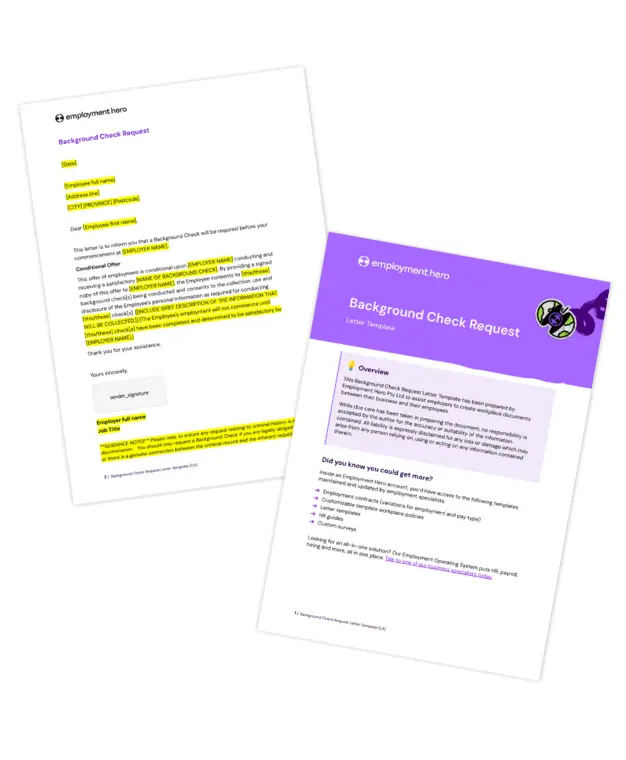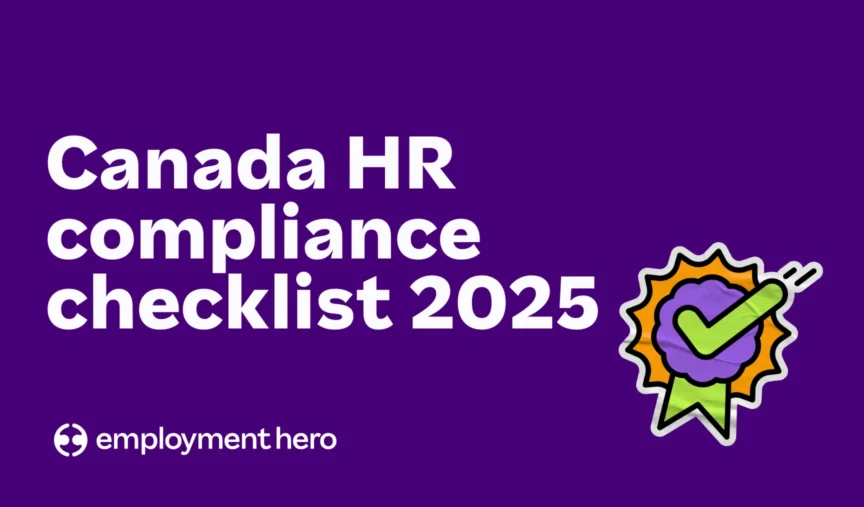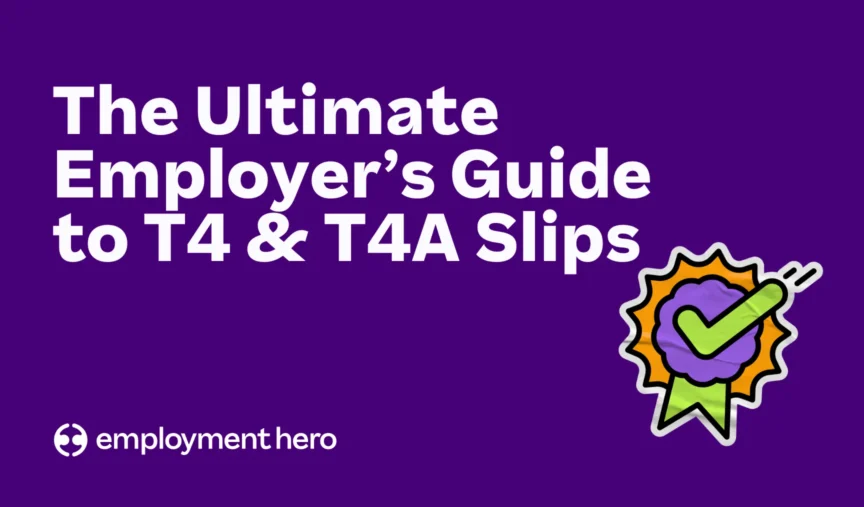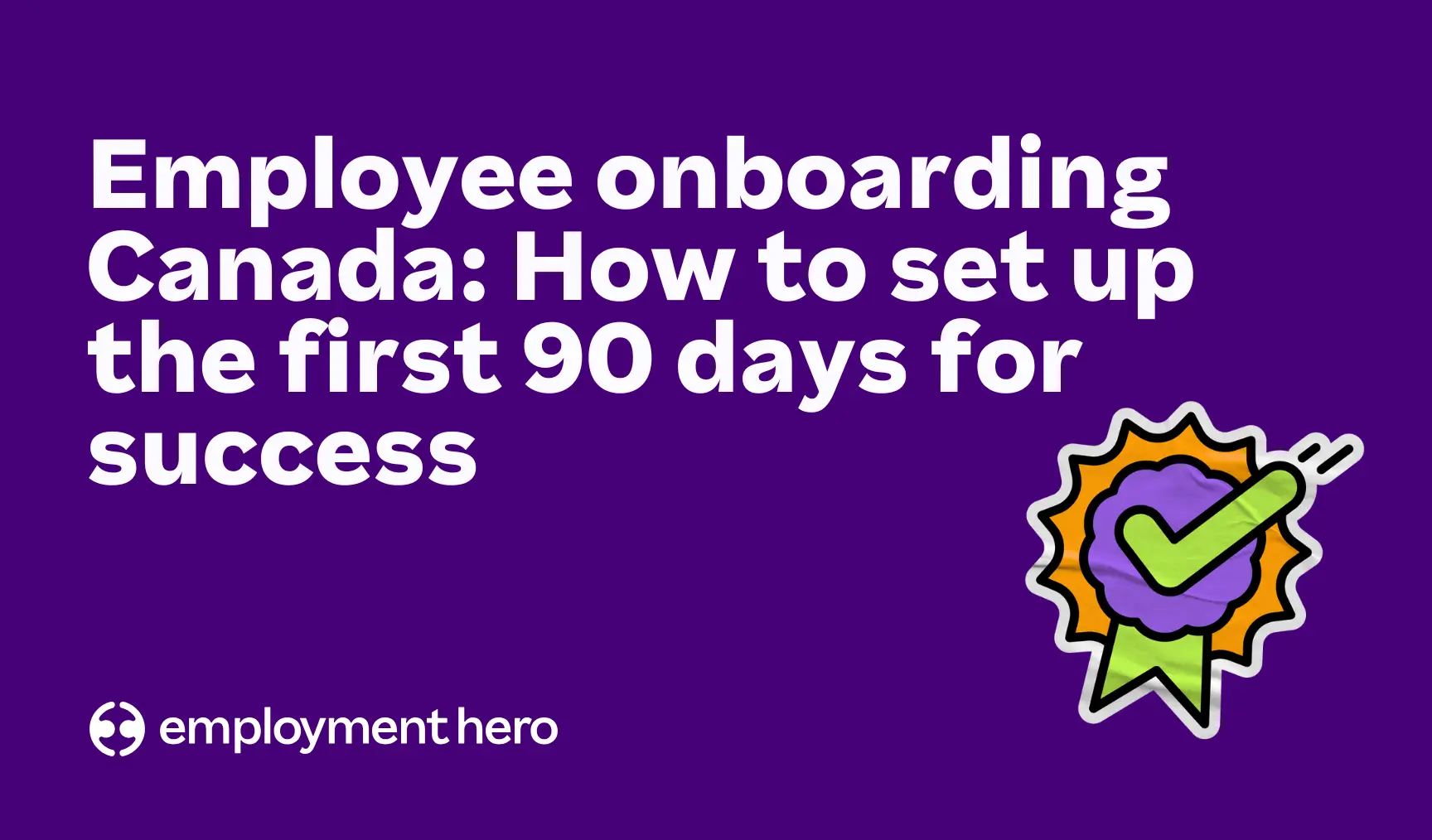The ultimate guide to employment background check in Canada
Published
The ultimate guide to employment background check in Canada
Published
An employment background check is a process employers use to verify information provided by a job applicant. This helps them make informed hiring decisions. These checks can include verifications of criminal records, educational qualifications, employment history and more.
In Canada, employment background checks are governed by a mix of federal and provincial laws, primarily focusing on privacy and human rights. Employers must obtain consent from the candidate and ensure the information they collect is relevant to the job. Key legislation includes the Personal Information Protection and Electronic Documents Act (PIPEDA) at the federal level and various provincial privacy acts.

What is a background verification letter?
A background verification letter is a formal document an employer sends to a job candidate to initiate the background check process. This letter outlines the checks that will be performed and often includes a consent form for the candidate to sign. Its main purpose is to ensure the process is transparent and that the employer has the candidate’s explicit permission to collect and use their personal information for this purpose.
The easiest way to request a background check from your employee
Requesting a background check can be a complicated process. Our free, downloadable template simplifies it by providing a clear document that you can use immediately. It ensures you have all the necessary components, from requesting consent to outlining the checks, all while adhering to Canadian standards.

Why do employers conduct an employment background check?
Employers conduct background checks for several important reasons. Primarily, it’s about mitigating risk. A thorough background check can help prevent a bad hire, which can lead to financial loss, damage to the company’s reputation and even legal issues. It also ensures the safety and security of the workplace, especially in roles that involve access to sensitive information, finances or vulnerable populations. By verifying a candidate’s qualifications and history, employers can make more confident and objective hiring decisions.
Common checks in a background verification
Background checks in Canada often include several components to get a comprehensive view of a candidate. Here are some of the most common checks:
- Criminal record check: This is one of the most common checks, used to determine if a candidate has a criminal history. It helps employers assess the potential for risk, especially in roles where a criminal record could be directly relevant to the job’s duties, such as handling money or working with children.
- Educational verification: This confirms the degrees, diplomas or certifications a candidate has listed on their resume. It ensures the candidate has the necessary qualifications for the role.
- Employment verification: This involves contacting previous employers to confirm the candidate’s job titles, dates of employment and responsibilities. It helps validate the candidate’s professional experience and track record.
- Credit check: In some roles, particularly those with financial responsibilities, a credit check may be performed to assess a candidate’s financial reliability. This requires specific consent and must be relevant to the job.
- Professional license verification: For professions that require a license (e.g., lawyers, doctors, engineers), this check confirms the candidate holds a valid, in-good-standing license.
Legal considerations for employers in Canada
Navigating the legal landscape of employment background checks is crucial for Canadian employers.
| Province/Territory | Relevant legislation | Key considerations |
|---|---|---|
| Federal | Personal Information Protection and Electronic Documents Act (PIPEDA) | Applies to federally regulated private sector organizations. Requires consent for the collection, use, and disclosure of personal information. |
| Alberta | Personal Information Protection Act (PIPA) | Similar to PIPEDA, it governs the collection, use, and disclosure of personal information by private organizations. |
| British Columbia | Personal Information Protection Act (PIPA) | Regulates how private sector organizations handle personal information, emphasizing the need for consent and relevance. |
| Ontario | Freedom of Information and Protection of Privacy Act (FIPPA), Ontario Human Rights Code | FIPPA applies to the public sector. The Human Rights Code prohibits discrimination based on a record of offenses that is not related to the job. |
| Quebec | Act Respecting the Protection of Personal Information in the Private Sector | One of the most stringent privacy laws in Canada, requiring explicit and separate consent for each type of background check. |
| Other Provinces | Varies by province, often with similar principles of consent, relevance, and human rights. | Employers should consult local regulations to ensure full compliance. |
How do employers do background checks in Canada?
The process of conducting a compliant background check in Canada generally follows these steps:
- Obtain informed consent: Before starting, an employer must get written consent from the candidate. The consent form should clearly state what information will be collected, why it’s needed and how it will be used.
- Define the scope: Determine which checks are necessary and relevant for the specific role. For example, a criminal record check may not be relevant for an entry-level office job, but is essential for a security position.
- Choose a reputable service provider: Many employers use third-party background check services to ensure accuracy and legal compliance.
- Conduct the checks: The service provider or employer then conducts the checks based on the scope.
- Review the results: Once the report is received, the employer should review the findings carefully and in the context of the job.
- Make a decision: Based on the results, the employer makes a hiring decision. If a candidate is not hired due to the background check, the employer must be able to demonstrate that the reason was directly related to the inherent requirements of the job.
Best practices for employers
- Be transparent: Clearly communicate with the candidate about the checks you’ll be conducting and why they are necessary.
- Get written consent: Always have a signed consent form before starting any checks.
- Ensure relevance: Only conduct checks that are directly relevant to the duties and responsibilities of the position.
- Treat information confidentially: Handle all personal information with the utmost care and in compliance with privacy laws.
- Follow up consistently: Inform the candidate of the outcome, whether they are hired or not and be prepared to discuss the findings if they request it.
Start your hiring process on the right foot
A thorough and compliant background check is a critical step in building a strong team. By following the best practices and using a reliable template, you can ensure a smooth process that protects your business and respects your candidates’ privacy.ess while providing valuable development opportunities for your employees.
Frequently asked questions
The employer or a designated representative, such as someone from the human resources department, issues the letter.
It is typically issued after a conditional offer of employment has been made, but before the candidate’s official start date.
The thoroughness of a background check depends on the role and the employer’s policy. It can range from a simple criminal record check to a comprehensive investigation of employment history, education and financial records.
This depends on the type of check conducted. A criminal record check will show convictions, while an employment verification will confirm job titles and dates. It will not show non-conviction records or personal details like marital status.
A basic criminal record check can be completed within a few business days, while more comprehensive checks, including employment and educational verifications, can take one to two weeks.
You should inform the candidate that the conditional offer is being rescinded based on the results of the background check. Be prepared to explain how the findings relate to the job and its requirements, but avoid providing excessive detail unless legally required.
Yes, employment verification is a standard part of a comprehensive background check and is used to confirm a candidate’s work history.
The information in this template is current as at 1 October 2025, and has been prepared by Employment Hero Pty Ltd (ABN 11 160 047 709) and its related bodies corporate (Employment Hero). The content is general information only, is provided in good faith to assist employers and their employees, and should not be relied on as professional advice. Some information is based on data supplied by third parties. While such data is believed to be accurate, it has not been independently verified and no warranties are given that it is complete, accurate, up to date or fit for the purpose for which it is required. Employment Hero does not accept responsibility for any inaccuracy in such data and is not liable for any loss or damages arising directly or indirectly as a result of reliance on, use of or inability to use any information provided in this template. You should undertake your own research and seek professional advice before making any decisions or relying on the information in this template.
Register for the template
Related Resources
-
 Read more: HR compliance checklist Canada 2025: What employers need to know
Read more: HR compliance checklist Canada 2025: What employers need to knowHR compliance checklist Canada 2025: What employers need to know
This HR compliance checklist covers workplace safety, privacy, employee records and province-specific obligations for employers.
-
 Read more: T4 guide for employers: Preparing and filing T4 and T4A slips in 2026
Read more: T4 guide for employers: Preparing and filing T4 and T4A slips in 2026T4 guide for employers: Preparing and filing T4 and T4A slips in 2026
Learn how to prepare, reconcile and file T4 and T4A slips. This step-by-step T4 guide for employers explains deadlines, boxes…
-
 Read more: Employee onboarding Canada: How to set up the first 90 days for success
Read more: Employee onboarding Canada: How to set up the first 90 days for successEmployee onboarding Canada: How to set up the first 90 days for success
Learn how to create an effective employee onboarding plan. Explore a 30-60-90 day framework, compliance requirements and strategies for long-term…

















